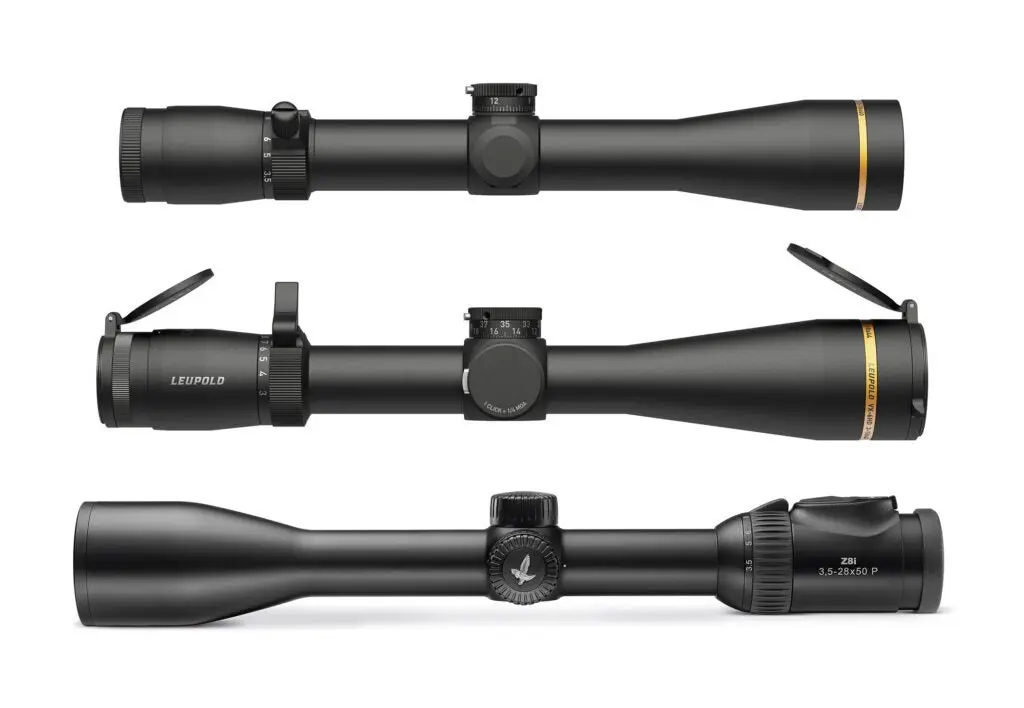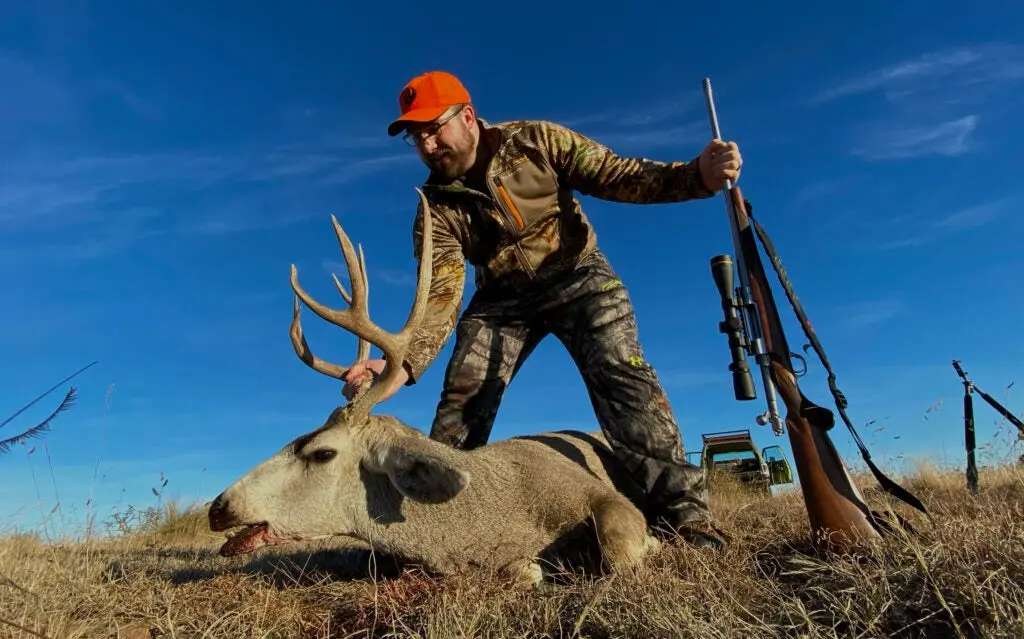_We may earn revenue from the products available on this page and participate in affiliate programs. Learn more ›
_
None of us wants to hunt with an ugly rifle. Ideally, the size relationship between a rifle and riflescope should improve the looks of your rig, providing a feng shui that would warm the heart of a Tibetan monk. But aesthetics is way down the list of what matters when it’s time to send bullets toward the critters we’ve been chasing. Practicality of function matters more.
So, when it comes to selecting a riflescope, what’s practical?
Size and Weight Are Important Considerations
The size and weight of a riflescope can change the handling characteristics of a rifle, and handling characteristics matter if you do any hunting on your hind legs. For the most part, modern hunting riflescopes have somewhat standardized in size, regardless of magnification range. Leupold’s VX-3HD 3.5-10X40mm riflescope is 12.67 inches long. Their VX-6HD 3-18X44mm riflescope provides 80 percent more magnification, but it’s only an inch longer, and Swarovski’s Z8i 3.5-28X50mm riflescope is only 15 inches long.

These three scopes offer vastly different magnification ranges, yet their size difference is small. Leupold/Swarovski
The real difference is in weight. The 3.5-10X Leupold weighs 13.5 ounces, and the 3-18X Leupold is 58 percent heavier. Swarovski’s Z8i 3.5-28X50 weighs a pound and a half, 74 percent more than the 3.5-10X Leupold. Adding weight to your hunting rifle matters because, unless you hunt from one of those cozy shootind houses, you’ll be carrying your rifle a lot more than you’ll be shooting it. As the great woodsman and gun writer Townsend Whelen wrote, “A man will travel farther, hunt over more country, have a better chance of coming on game, and be in better condition when he does if his weapon is light.”
Magnification Matters Most for Scope Choice
In the end, th_e_ “size” measurement that matters most with any riflescope is its magnification range. This is partly because magnification dictates weight, but also because it dictates shootability.
Back in the day, the 3-9X riflescope was king because it seemed to offer the best range of magnification. At that time, the standard riflescope zoom factor was 3X, so your options were either 1.6-5X, 2.3-7X, 3-9X, 4-12X, or 6-18X. Today zoom factors of 4X, 5X, 6X, and even 8X are common. Swarovski offers a 1.3-13.3X riflescope which effectively takes care of the first four options a hunter had in the last century.
I believe the 3-9X riflescope was also popular because it offered 1X magnification for every 100 feet that a hunter would most likely shoot. Before the new millennium, 300 yards was considered a long shot and 9X magnification gave you 1X for every 100 feet, all the way out to 900, or 300 yards.
In that regard, nothing has changed. For hunters, 1X for every 100 feet is still a good rule of thumb to follow when selecting a riflescope. This allows you to effectively make any animal you’re preparing to shoot seem no farther than 100 feet away, which will work just fine for everything from prairie dogs to African buffalo.
Just as important, it gives you a sufficient field of view at extremely close range. With the old 3-9X scopes, when a whitetail buck ran by you at about 30 yards, the low-end magnification of 3X gave you a field of view of about 12 feet. This was enough to keep the deer in the riflescope while you scanned ahead looking for a shot opening. You’ll get the same benefit from any scope than has that 1X-for-every-100-feet relationship.
The Best High and Low End Magnification for Today’s Hunters

The size of the scope on this rifle looks good, but it’s the magnification range that really mattered when the shot was taken. Richard Mann
What has changed is that many hunters now consider 300 yards a chip shot. With modern cartridges, a rifle zeroed with a maximum point-blank range allows you to hold dead-on out to damn-near that distance. If you’re a good marksman, 400- and even 500-yard shots may be practical. If that’s the case, you’ll need at least 12X or 15X to meet that 100-foot rule.
Just don’t make the mistake of focusing only on maximum magnification. Minimum magnification matters too, maybe even more so. What makes today’s 6X and 8X zoom-factor scopes so practical is that you can get that 12X to 15X high end with a low end of 2x or less, or an 18X or more high end with a low end of 3X or so. That should make it easy to find a riflescope that’ll do everything any hunter needs done, at any distance.


